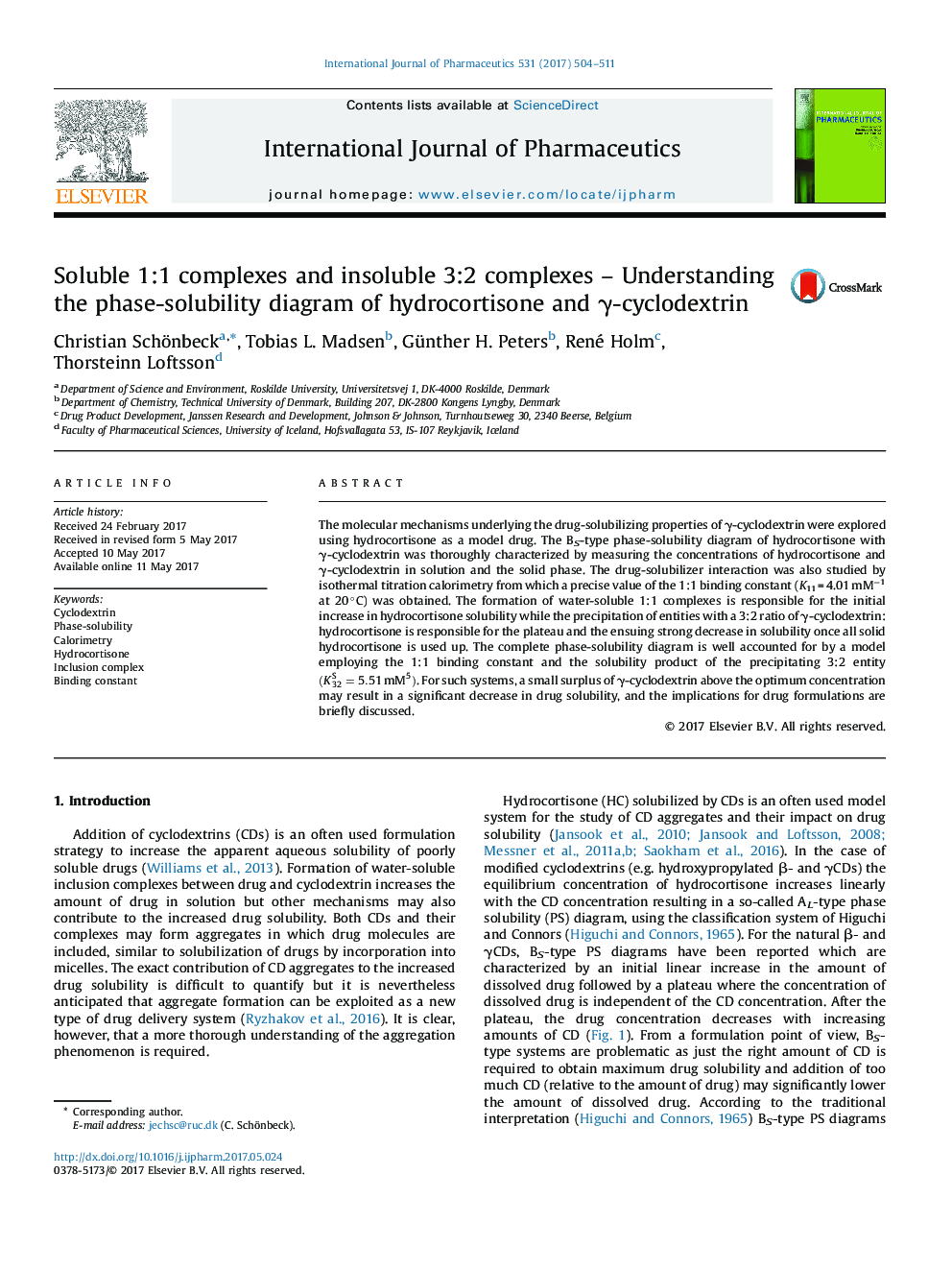| Article ID | Journal | Published Year | Pages | File Type |
|---|---|---|---|---|
| 5550076 | International Journal of Pharmaceutics | 2017 | 8 Pages |
The molecular mechanisms underlying the drug-solubilizing properties of γ-cyclodextrin were explored using hydrocortisone as a model drug. The BS-type phase-solubility diagram of hydrocortisone with γ-cyclodextrin was thoroughly characterized by measuring the concentrations of hydrocortisone and γ-cyclodextrin in solution and the solid phase. The drug-solubilizer interaction was also studied by isothermal titration calorimetry from which a precise value of the 1:1 binding constant (K11 = 4.01 mMâ1 at 20 °C) was obtained. The formation of water-soluble 1:1 complexes is responsible for the initial increase in hydrocortisone solubility while the precipitation of entities with a 3:2 ratio of γ-cyclodextrin:hydrocortisone is responsible for the plateau and the ensuing strong decrease in solubility once all solid hydrocortisone is used up. The complete phase-solubility diagram is well accounted for by a model employing the 1:1 binding constant and the solubility product of the precipitating 3:2 entity (K32S=5.51âmM5). For such systems, a small surplus of γ-cyclodextrin above the optimum concentration may result in a significant decrease in drug solubility, and the implications for drug formulations are briefly discussed.
Graphical abstractDownload high-res image (158KB)Download full-size image
